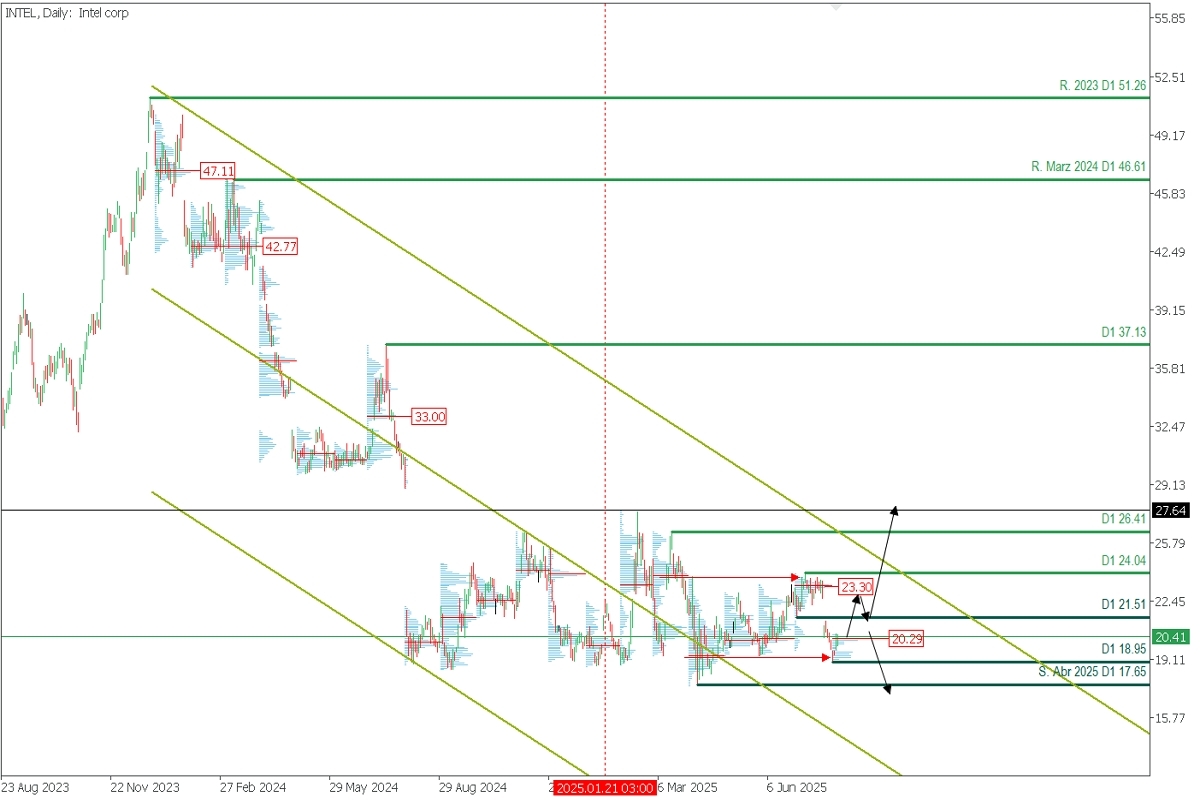Intel just reported its Q2 2025 results on Thursday, July 24: revenue beat expectations with $12.9 billion versus the projected $11.95 billion, but earnings per share came in negative at –$0.10, well below the estimated $0.01, triggering a ~3.7% drop in the stock after market close.
Investors are now closely watching the future of its Foundry division and the implications of new CEO Lip-Bu Tan’s restructuring plan.
What is Intel Foundry Services (IFS)?
IFS represents Intel’s bold move to compete with industry giants like TSMC and Samsung. For the first time, Intel is opening up its fabs to produce chips designed by third-party companies. In other words, Intel aims to become an independent contract chip manufacturer, alongside producing its own designs.
This strategic shift reflects Intel’s desire to diversify revenue streams and enhance the technological resilience of the U.S., aligning with government policies to boost domestic semiconductor production.
Key Projects Underway
One of Intel Foundry’s major potential clients is Microsoft, which has already announced plans to use Intel’s fabs to manufacture Arm-based chips. Additionally, Intel is expanding its facilities in Arizona, New Mexico, and Ohio, supported by the U.S. government’s CHIPS Act.
These efforts aim to position Intel as a strategic supplier of advanced chips in the coming years, especially as demand for processing power grows across AI applications, data centers, and smart vehicles.
What Are Analysts Saying?
Currently, the analyst consensus from Refinitiv and Nasdaq shows:
- Average price target: $40
- High price target: $72
- Low price target: $17
This wide range reflects high uncertainty about Intel’s Foundry execution and short-term profitability.
Major banks like Goldman Sachs and Bank of America have adopted a neutral stance, while others such as Wedbush have expressed skepticism about Intel’s ability to effectively compete with TSMC in the foundry segment.
What Investors Need to Watch
Beyond the quarterly numbers, investors are focused on whether Intel can successfully reinvent itself. The Foundry business is promising but demands heavy investment, flawless execution, and the ability to win clients from entrenched competitors.
Intel’s future depends on convincing the market it can be not just a chip designer, but a global, competitive manufacturer in a highly specialised industry.
🔧 Technical Analysis

Intel’s stock remains in a downward bias, trading within a rising regression channel but still showing weakness. After bouncing from its April low of $17.65, further recovery and a bullish reversal would require a break above the $26.41 resistance. A drop back below $17.65 could signal further downside risk.



